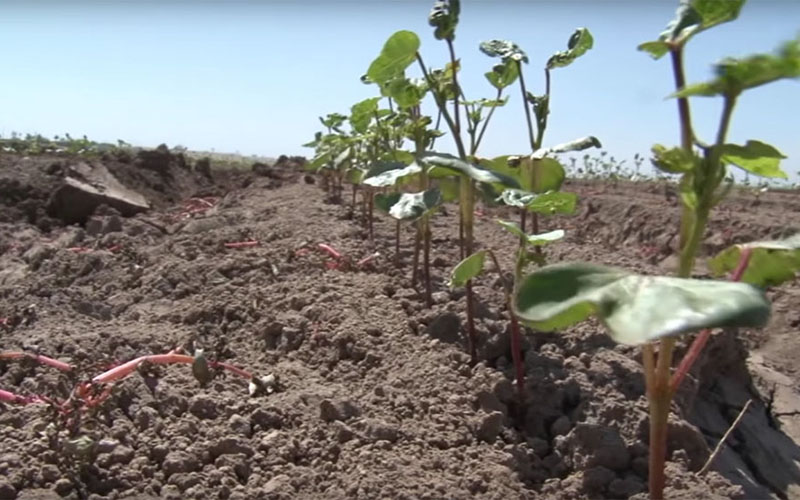
Drip irrigation is just one of the ways farmers in Yuma are working to maximize their use of water, as the region struggles through another year of drought. (Photo by Anthony Marroquin/Cronkite News)

Yuma draws its water from the Colorado River, as does most of Arizona, but river levels have been perilously low in recent years from the ongoing drought.(Photo by Anthony Marroquin/Cronkite News)

Farmers in the Yuma area have managed to cut water usage by 20 percent, by the use of sprinklers and other technologies, while boosting farm output.(Photo by Anthony Marroquin/Cronkite News)
YUMA – As Arizona copes with a 15-year drought, farmers in Yuma are learning to do more with less and leading the way in water conservation.
“We’re very good stewards of what we have here,” Bruce Gwynn, executive director of the Yuma Fresh Vegetable Association said. “We’ve got soil. We’ve got water, and we’ve got sunlight.. And we’ve sustained it. We’ve done well with it, and the city has profited from it.”
The development comes as Arizona faces a steady decline in the supply of water available for crops or other needs.
According to the Yuma Fresh Vegetable Association, farmers in the lettuce capital of the country have successfully implemented irrigation techniques that have cut their water usage by 20 percent, while increasing crop production by 30 percent.
They’re also using the technique of laser leveling fields to distribute water more efficiently and prevent wasteful puddles..
And many use sprinkler systems that better control the amount of water that gets distributed to the crops.
“We want to be as efficient as possible,” local farmer Jeff Johnson said. “We want to grow a crop that’s quality.”
Lake Mead levels currently average around 1,076.50 feet above sea level. If that number drops below 1,075 feet at the end of any given year then the Central Arizona Project which is pumping and distributing water across the state from the greater Phoenix area to Tucson, would have to cut its water diversion by 350,000 acre feet.
That’s enough water to cover 350,000 football fields in one foot of water.
Last year, water levels sunk as low as 1,074.98 feet above sea level, before rising again above the 1,075 foot mark. Going forward, the United States Bureau of Reclamation predicts that Lake Mead will drop below the benchmark level by the end of May.
Yet, even if CAP is forced to reduce pumping, Yuma farmers hold the senior right on water diverted from the Colorado river and would be the last to have its allotment of water reduced, come a water shortage.
Farmers would see spike in their water bill. Increased demand from a growing population in the Southwest has already driven prices up.
“We felt we had to come up with better ways to more efficiently use the water so that it would cost less money just to grow the crop,” Johnson said.